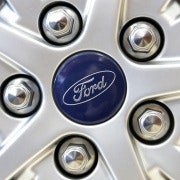An auto benchmark for manufacturing malaise
Yesterday's announcement by Ford Australia president Bob Graziano that the car company will exit Australian manufacturing by 2016 is not a surprise for anyone who has been paying attention to the fortunes of the manufacturing industry.
After announcing an after-tax loss for 2012 of $141 million, coupled with five year losses totalling approximately $600 million, Graziano confirmed it would close its last remaining Victorian manufacturing centres at Geelong and Broadmeadows, cutting 1200 staff.
Despite $34 million worth of federal government financial assistance announced last year, the losses, a bleak future caused by a “fragmented marketplace”, “low model volumes”, and the “high cost of manufacturing”, has caused Ford to finally decide that “manufacturing is not viable for Ford in Australia in the long-term”.
The significance of this announcement should not be understated. Ford has a proud Australian history dating back to 1925 and its iconic car lovers' brand – the Falcon – has provided an important element in our culture, especially in those endless battles with arch-rival Holden.
Despite Graziano claiming an ongoing commitment to Australia and that Ford would remain a “strong part of the Australian driving experience”, some commentators are saying that this is the beginning of the end with Ford’s market share likely to fall to less than 5 per cent.
The last car manufacturers to leave Australia’s shores, Mitsubishi and Nissan, have had difficulty regaining customers' trust and support.
From my perspective there are two major issues here. One of them is that the high Australian dollar does make us less competitive in an increasingly competitive environment, given the foreign competition.
But there’s more to it: it’s also about how we market our cars. The sales for domestic-made cars have dropped quite considerably over the past 10 years and we have to ask ourselves why. It’s not just about foreign imports, but also the sorts of cars we’re making. We haven’t been as agile when it comes to looking at consumer preferences and the different requirements that consumers have. The Japanese-made Mazda is Australia’s top-selling car, while the Ford Falcon languishes below rivals Toyota and Holden.
While the high Australian dollar has been blamed for a lot of this, I think the car companies themselves need to take some responsibility here to change according to consumer tastes.
It’s quite obvious foreign imports have been able to satisfy those changes in consumer preferences where domestic manufactured cars have not. The rationale for the government giving so much industry assistance is based on the premise the industry has substantial knock-on effects for research and development and engineering, and so on.
I think there’s some credibility to that argument. But the question really is: is the car industry the best industry to sustain a lot of these smaller manufacturers? Given the environment and the competition, we’re probably better off drawing upon our skills base, which is quite unique.
Australia’s highly sophisticated, complex economy is considered one of the most skilled in the world. It’s quite obvious that with global supply chains and design teams, car manufacturing has a lot of competition to it.
Frankly, in the medium to longer term, I don’t think there’s a great future for broad-based car manufacturing. That’s not to say there’s not a future for car manufacturing as such. As we’ve seen in the UK, there’s been a resurgence in car manufacturing – mainly around prestige or niche markets.
That’s probably something we need to think more about. If we are going to have a car industry, how are we going to capitalise on what we have in competitive terms? It was notable that Ford indicated that they are likely to keep 1000 product development staff such as engineers, designers and research people in Australia as one of only four Ford product development hubs. Even Ford recognises our expertise and skills within this area are actually quite important.
However, it does seem the rubber has hit the road. After a comprehensive review process Ford argues:
"All viable alternatives were evaluated as part of the process including manufacturing various types and combinations of vehicles for local sale as well as the viability of a significant export program."
The scenarios investigated also included varying levels of government support, manufacturing cost reductions and “productivity improvements”. But they were clearly found wanting.
Not a positive response for the future of large scale Australian manufacturing. The lesson is simple for manufacturing – adapt to survive, or don’t expect to have a future in Australia.
Paul Gollan is associate dean, research and professor of management at Macquarie University's Faculty of Business and Economics.
The author does not work for, consult to, own shares in or receive funding from any company or organisation that would benefit from this article, and has no relevant affiliations.
![]() This article was originally published at The Conversation. Read the original article.
This article was originally published at The Conversation. Read the original article.













